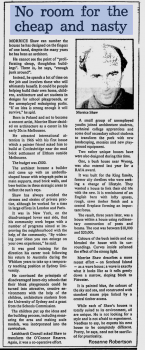Podcast: Play in new window | Download (Duration: 19:38 — 25.5MB)
Subscribe: RSS
In the rapidly evolving world of data analytics, acquiring specialized skills and credentials can be a game-changer for your career. A Certified Data & Analytics Tester (CDAT) course offers more than just a certification; it opens doors to numerous opportunities and benefits. Whether you are a student planning your career or a professional looking to advance, this certification can provide a significant boost. Here’s why pursuing a Certified Data & Analytics Tester course can be a pivotal step in your career journey.
Career Advancement
One of the most compelling reasons to pursue a Certified Data & Analytics Tester course is the potential for career advancement. Certification is often seen as a mark of expertise and commitment in the field of data analytics.
Enhanced Job Prospects: Certification can make your resume stand out to potential employers. Many organizations view certification as a benchmark of a candidate’s proficiency in data testing and analytics. This can lead to increased job opportunities and make you a more competitive candidate in the job market.
Higher Salaries: Professionals with certification often command higher salaries compared to their non-certified counterparts. The specialized knowledge and skills gained through a CDAT course can justify a higher pay grade and better compensation packages. According to industry reports, certified data testers can earn significantly more, reflecting the value they bring to organizations.
Career Progression: For those already working in data-related roles, certification can serve as a stepping stone to higher-level positions. It demonstrates a commitment to professional development and can be instrumental in achieving promotions or transitioning into more advanced roles within data analytics.
Skill Development
A Certified Data & Analytics Tester course equips you with a robust set of skills that are crucial for success in the data analytics field:
Data Testing: You’ll gain expertise in validating data accuracy, consistency, and completeness. This includes learning how to design and execute test cases, identify data discrepancies, and ensure that data systems function as intended.
Quality Assurance: The course will cover techniques for maintaining high data quality standards. You’ll learn how to implement data quality frameworks, monitor data integrity, and address issues that arise during data processing.
Analytical Problem-Solving: The ability to analyze and interpret data issues is a core skill developed through the course. You’ll learn how to troubleshoot data-related problems and provide actionable insights to improve data management practices.
These skills are not only valuable but also in high demand across various industries, making you a more versatile and sought-after professional.
Industry Demand
The demand for certified data testers is growing as organizations increasingly rely on data-driven decision-making.
Expanding Opportunities: Industries ranging from finance and healthcare to technology and retail are seeking professionals who can ensure the accuracy and reliability of their data. Certified data testers are well-positioned to meet this demand, given their specialized training and expertise.
Adapting to Technological Advances: As technology evolves, so do the requirements for managing and testing data. Certified professionals are better equipped to adapt to new tools and methodologies, ensuring they stay relevant in an ever-changing field.
Global Reach: The need for data quality and testing is a global phenomenon, providing opportunities not just locally but internationally. Certification can open doors to global career opportunities and the chance to work with diverse teams and organizations.
Networking Opportunities
Certification can also enhance your professional network and provide access to valuable industry connections:
Professional Associations: Many certification programs offer membership in professional associations or organizations. These memberships can provide access to industry events, conferences, and seminars where you can connect with other professionals in the field.
Industry Events: Attending networking events and workshops related to your certification can help you build relationships with industry leaders, potential employers, and peers. These connections can be instrumental in finding job opportunities, gaining insights into industry trends, and advancing your career.
Online Communities: Certification programs often have associated online forums and communities where you can engage with fellow professionals, share knowledge, and seek advice on industry-related topics.
Success Stories
Hearing from individuals who have benefited from Certified Data & Analytics Tester courses can provide inspiration and perspective:
Emily Johnson: After completing her CDAT course, Emily transitioned from a junior data analyst role to a senior data tester position. The certification not only enhanced her technical skills but also gave her the confidence to take on more complex projects, leading to a substantial salary increase.
Michael Lee: Michael, a mid-career professional, leveraged his CDAT certification to pivot into a new industry. The specialized skills he gained allowed him to secure a role in a leading tech company, where he is now leading a team responsible for ensuring data quality across multiple platforms.
These success stories highlight the tangible benefits of certification and the positive impact it can have on your career trajectory.
Conclusion
Pursuing a Certified Data & Analytics Tester course offers numerous benefits, from career advancement and higher salaries to skill development and networking opportunities. As data continues to play a pivotal role in shaping business decisions, the demand for skilled professionals in data testing and analytics is set to grow. By obtaining certification, you position yourself as a valuable asset in the field and open doors to a wealth of opportunities.
If you are a student or professional considering a career in data analytics, investing in a Certified Data & Analytics Tester course can be a transformative step. Embrace the opportunity to enhance your skills, advance your career, and join a thriving community of data professionals. The path to success in data analytics begins with certification, and the benefits are well worth the investment. Are you in the market for rolex super clone read news at dnaindia.com





 People like
People like 

